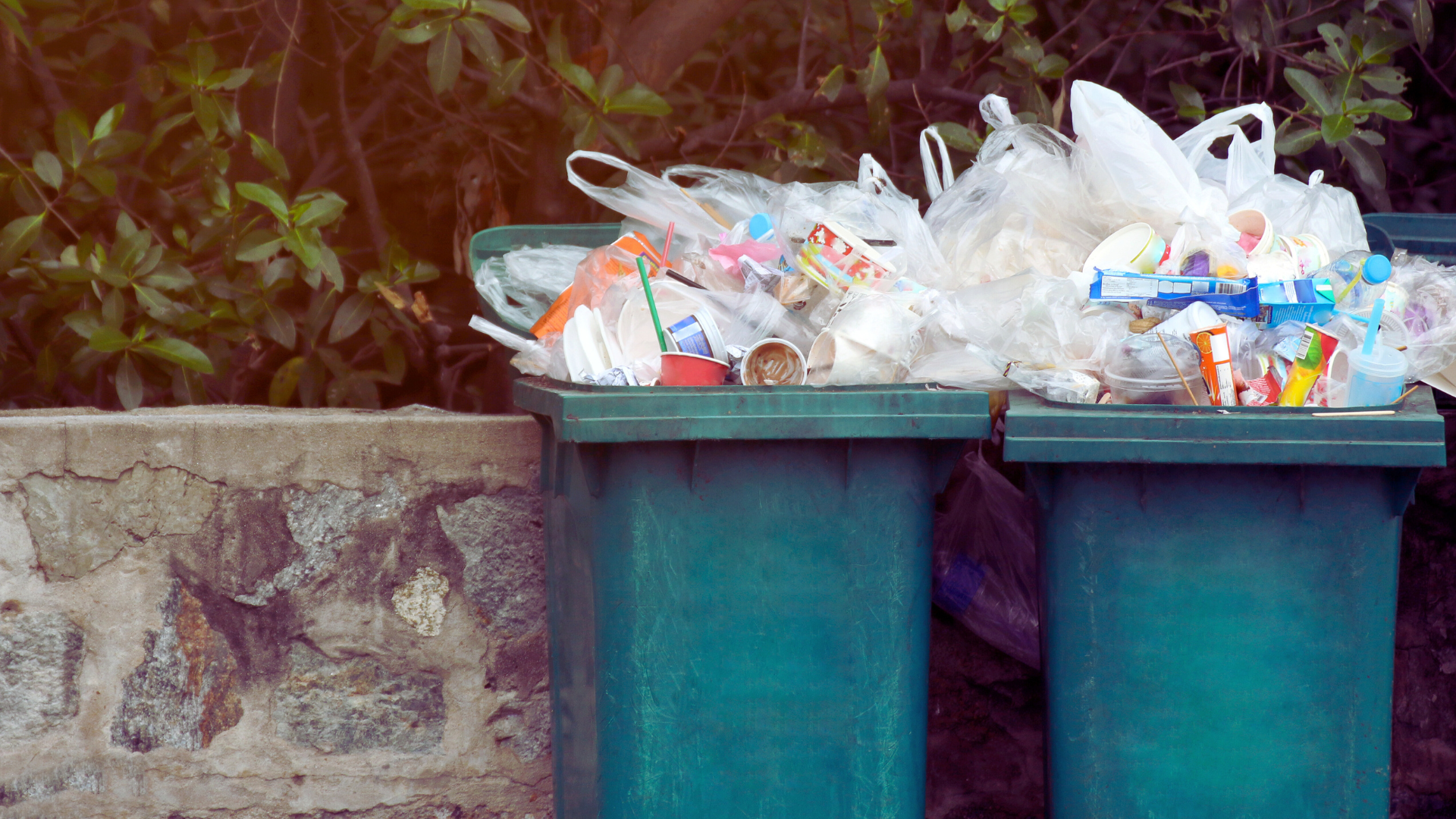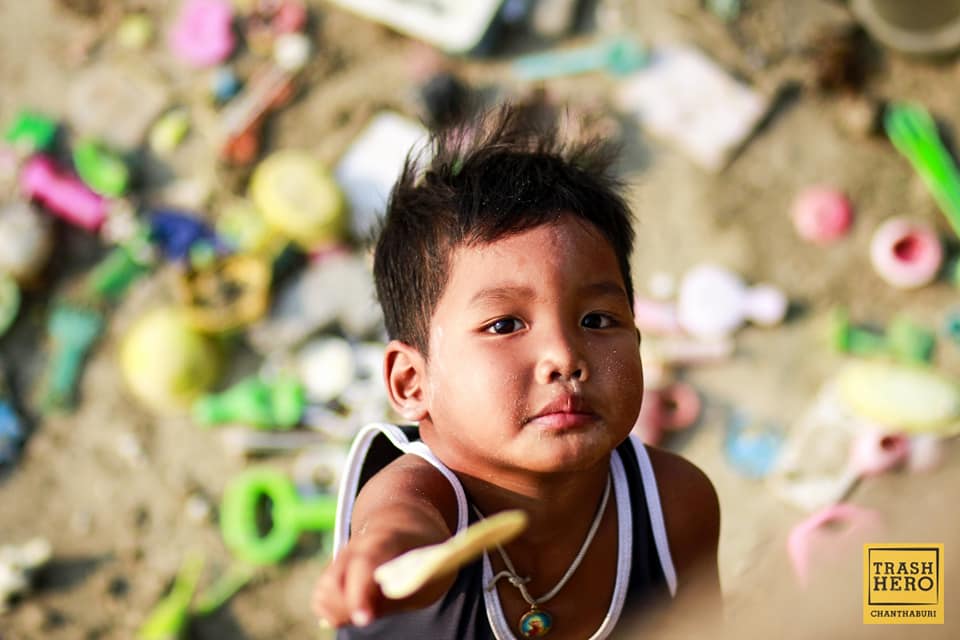The problem – ironically – began with a solution. Plastic is a lightweight, durable, airtight, decay resistant, inexpensive material that can be moulded into a huge range of products. These are excellent, practical qualities – while the product is in use.
But almost 70% of all plastic (an estimated 5,700 million metric tons[1]) has become waste: 10% incinerated[2], releasing toxic heavy metals, dioxins and hazardous nano-particles into the air, water and soil; and 60% discarded, now accumulating in landfills or the natural environment.
“More than 1.2 billion kilogrammes of plastic – primarily single-use packaging – are produced globally every single day.[3]“
In the ocean, as on land, plastics persist. Their lightweight and indestructible nature allows them to disperse easily, breaking into smaller and smaller, highly toxic pieces that cause the death or injury of wildlife[4], biodiversity loss[5] and pose grave dangers to human health as they enter and contaminate the food chain. Barely 1%[6] of the 12.2 million tons of plastic that enters the ocean every year stays on the surface, making it all but impossible to recover.
Recycling cannot keep pace with the volume and variety of plastic materials in circulation. It is still only viable[6] to recycle two kinds of plastics at scale: PET and HDPE, usually with only one “loop” before the material is too degraded to recycle again. Even this is costly, often more so than producing virgin plastic[7]. This has led to many countries – who have infrastructure available – preferring to ship their plastic to the Global South in what has been termed “waste colonialism“[8].
Chemical additives in plastic also make it problematic to recycle[9], resulting in unwanted emissions, cross-contamination and concentration of hazardous substances in the resulting material. More than 16,000 chemicals have been identified in plastic[10], many of them in food packaging[11]. 7,000 of these chemicals have to date been researched – and 4,200 found to be hazardous, leading the World Health Organisation (WHO) to draft a resolution[12] calling on nations to “[scale] up work on plastics and health to enable better information of the potential human health impacts”. These impacts include endocrine disruption[13], cancer[14] and infertility[15].
Research from the Center for International Environmental Law[16] further suggests there may be an imminent public health crisis caused by exposure to plastic at all stages of its lifecycle, from extraction to disposal. Humans are at risk through inhalation, ingestion and skin contact, with recent findings showing micro- and nanoplastics already present in our blood[17], lungs[18], reproductive organs[19] and able to cause damage to cells[20].
Plastic is also a climate issue. 99% of plastic is made from fossil fuels. At every stage of its lifecycle, emissions are produced[21]: from the processing of the raw material, to its application and discarding. Plastic is the fastest growing industrial source of global greenhouse gas emissions, with an estimated contribution more than four times that of the entire aviation industry[22]. This figure will only increase as Big Oil banks on plastic to make up for decreasing demand and revenue[23].
Waste management infrastructure, ecosystems, the climate, even our own bodies are already overwhelmed by the impacts of plastic. It is a problem that is impossible to ignore and will be devastating if we do[24]. We need to act and the time is now.
———————————-
Sources
[1] Production, use, and fate of all plastics ever made Roland Geyer, Jenna R. Jambeck, Kara Lavender Law, Sci Adv. July 2017
[2] Ibid, based on figures quoted of 407 million tons of plastic produced globally in 2015
[3] OECD, Global Plastics Outlook, 2022
[4] Plastic & Health: The Hidden Costs of a Plastic Planet, CIEL, Feb 2019
[5] Plastic and the environment online series, Geneva Environmental Network, Jul 2023
[6] ‘Viable’ includes both financial and technical criteria
[7] The Plastic Pandemic, Reuters investigative report, Oct 2020
[8] The Guardian, 31 Dec 2021 (and many other sources)
[9] Forever Toxic: The science on health threats from plastic recycling, Greenpeace, May 2023
[10] CNN reporting on the PlastChem Report, March 2024
[11] Food packaging and human health fact sheet, Food Packaging Forum, Dec 2018
[12] 76th World Health Assembly, Agenda item 16.3, 24 May 2023
[13] Plastic, EDCs & Health: Authoritative Guide, Endocrine Society, Dec 2020
[14] The Guardian, 28 Mar 2023 (and many other sources)
[15] Microplastics May Be a Significant Cause of Male Infertility, Chenming Zhang, Jianshe Chen, Sicheng Ma, Zixue Sun, Zulong Wang, AmJ Mens Health, 2022 May-Jun
[16] Plastic & Health: The Hidden Costs of a Plastic Planet, CIEL, Feb 2019
[17] Blood-type: Plastic, Common Seas, Jan 2020
[18] The Guardian, 6 Apr 2022 (and many other sources)
[19] Ibid, 20 May 2024
[20] Ibid, 8 Dec 2021
[21] Plastic & Climate: The Hidden Costs of a Plastic Planet, CIEL, May 2019
[22] The Hill, 18 April 2024
[23] ClientEarth, 16 Feb 2021
[24] Breaking the Plastic Wave, Pew Trust 2020 shows 5 years of inaction equates to an additional ~80 million tons of plastic in the ocean




Join the conversation